Browse by Tag
- "Real" Innovation (2)
- Alignment (6)
- Business Innovation (9)
- Business Plan (2)
- Business Plans (1)
- Creativity (24)
- Critical Success Factors (4)
- Entrepreneurship (9)
- Global Competiveness (4)
- Human Side (11)
- India (1)
- Innovation (4)
- Innovation Consulting (18)
- Innovation Killers (3)
- Innovation Management (18)
- Innovation Tools (17)
- Innovation Training (24)
- Innovations (7)
- Inventions (16)
- IT Innovation (1)
- Leaders (5)
- Leadership (20)
- Leadership Development (13)
- Organizational Leadership (2)
- Organizational Strategy (20)
- Personal Values (6)
- Prediction (5)
- Strategic Innovation (38)
- strategic planning process (4)
- Strategy (3)
- Training (1)
- Vision (5)
- Weekly Dose (8)
Posts by Month
- 2014
- 2013
- 2012
- 2011
- 2010
- 2009
- 2008
- 2006
Cool Innovation: Toyota's New Steering Wheel Knows If You're Having A Heart Attack
Toyota to Integrate ECG Sensors Into Steering Wheels
Toyota ECG steering wheel Hypochondriacs, rejoice. Toyota is reportedly working on a steering wheel with an electrocardiogram (ECG) built in. In the future, your car will be able to tell you if you have arrhythmia--or even if you're having a heart attack.
With a built-in ECG, the new wheel could stop the cars of people under distress, and also serve as a mini-checkup every time you turn the keys.
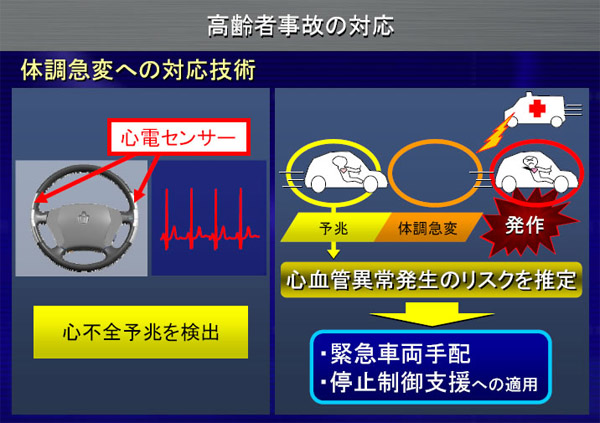
Hypochondriacs, rejoice. Toyota is reportedly working on a steering wheel with an electrocardiogram (ECG) built in. In the future, your car will be able to tell you if you have arrhythmia--or even if you're having a heart attack.
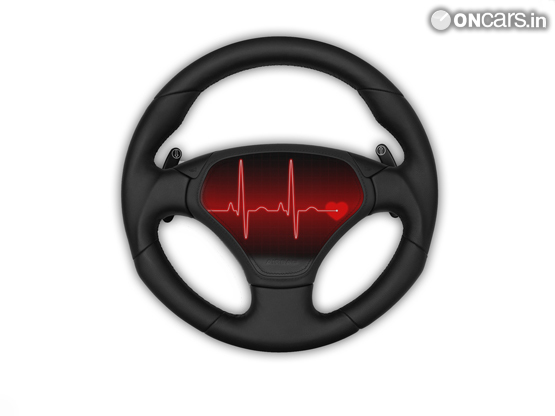
The setup is simple: Contact sensors embedded in the steering wheel detect abnormal heart rhythms via the driver's hands. Toyota recently showed off a Prius outfitted with the steering wheel to a group of reporters at one of its Japan facilities, according to Medgadget. The ECG info was shown on the in-car navigation screen--meaning that one day, you could casually check your heart rate along with the weather and local news.
Toyota isn't the only automaker that wants to put health-related technology in its vehicles. Ford is also working on a car seat with a built-in heart rate monitor, which can measure the human heartbeat through clothing without any need for skin contact. ...read more
Source: FastCompany
MEDICAL BREAKTHROUGH: Human organ constructed and implanted
Many patients don’t survive the waiting list for a donor organ.
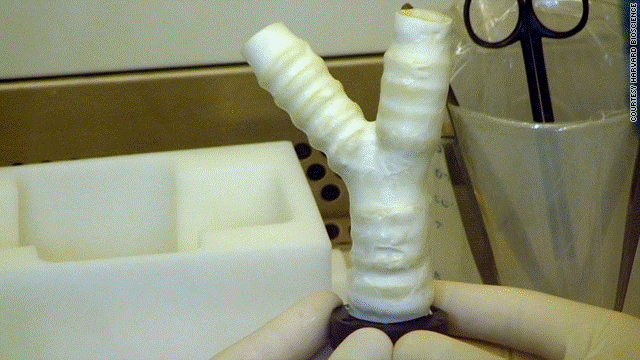
Recently, medical community announced that a patient received a trachea (“windpipe”) that was created with the patient’s own stem cells. (Stem cells are a versatile type of cell that can transform into many types of cells. http://1.usa.gov/ubcAp)
The trachea was constructed with an artificial “skeleton” of a spongy material which was then immersed in a solution of stem cells. The cells grew into the sponge material, creating a living organ in less than two weeks. The resulting trachea was then implanted into the patient (who was suffering from tracheal cancer). The patient’s body accepted new-formed organ as if it was the original trachea.
In theory, the same process could be used to create other, more complex organs: glands, liver, lungs, heart, etc.
This is lot like when the NASA space program started in 1960s with small experiments of unmanned flights. We are very early in the stages of ‘manufacturing human organs’ as an industry. But based on this breakthrough, it is very likely within next 25 years, that our children easily will have access to such constructed organs as easy as knee surgery today.
For more information and additional photos, take a look at a recent article at CNN http://bit.ly/qAibNI.
Source: CNN
Old Clothing Glued Together, To Form Mega-Stylish Chairs
And they’re actually sturdy!
Far too many people toss their outdated clothes or, worse, send them to Salvation Army assuming, wrongly, that someone else wants to snatch up a pair of 1987 Z. Cavariccis. Tobias Juretzek ain't one of them. He takes his old shirts, jeans, and other garments and turns them into something actually useful: furniture.
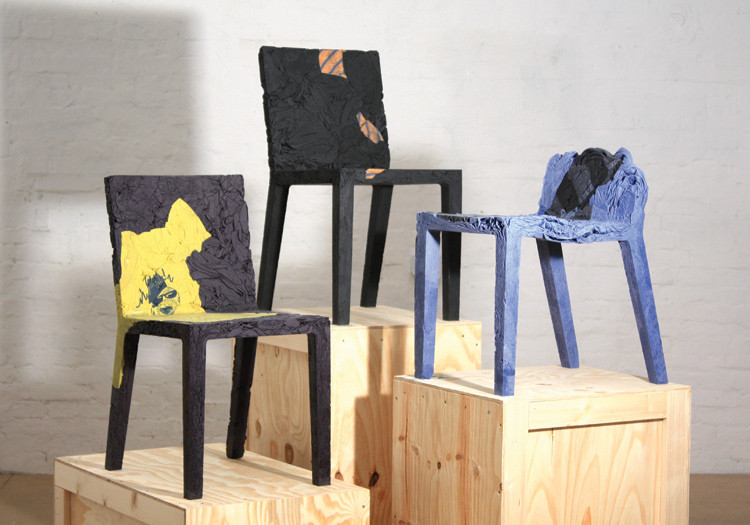
Juretzek, a German designer, throws together disused clothes to create stylish little chairs that could almost pass for something you'd find around the dining-room table, if not for the occasional exposed zipper (ouch!).
Source: Fast Co.Design
How to Innovate in 1 hour a week
How great business innovators are made (not born)
The key to being more innovative is to fence off an hour a week to simply sit and think, says creativity consultant Todd Henry. Setting aside a regular time for reflection lets executives see connections they might miss while they're trying to get work done. "This is not time to do work. This is time to think about work," Henry says.
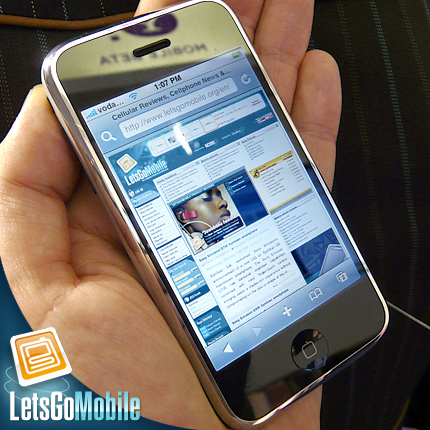
Not long ago, creativity guru Todd Henry recommended to one of his consulting clients, a high-ranking manager, that he set aside one hour a week to generate new ideas -- "one hour, predictably scheduled, no exceptions and no violations," Henry says in his book, The Accidental Creative: How to Be Brilliant at a Moment's Notice. "This is not time to do work. This is time to think about work."
That executive's reaction, Henry recalls: "He fired back at me, 'What?! You just want me to sit around and think?!" Read more...
Source: Fortune - Anne Fisher
Six Designs For Houses That Cost Just $300 To Build
300 House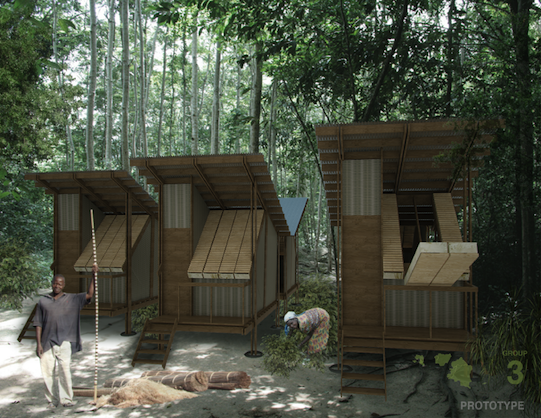
Shelter is one of humanity's most basic needs. But a house is a luxury beyond the wildest dreams of most people in the developed world--leading to dangerous and unsanitary shantytowns, which compound the problems of poverty and disease. The $300 House Project, for which designers were asked to figure out a way to construct a simple house for $300 or less, aimed to solve this problem, by creating cheap and simple to build houses that could be built on a massive scale. The winners--judged by luminaries like Yves Behar and Umair Haque--were recently announced.
300 House Origins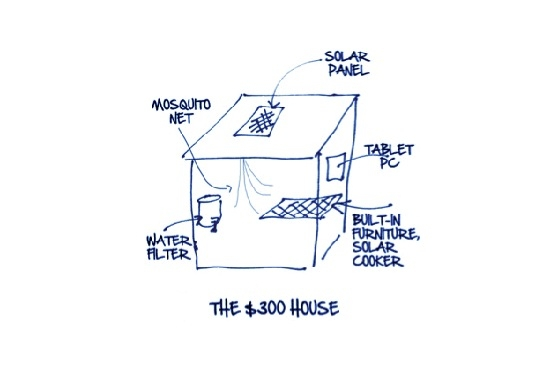
The idea started with this simple napkin drawing of what a $300 house could look like (though wall-mounted tablet computers were unrealistic) and a challenge offered in a series of posts at the Harvard Business Review by Vijay Govindarajan and Christian Sarkar. The contest itself garnered 300 submissions and resulted in six winners, which will take the next step of actually prototyping their designs.
DVS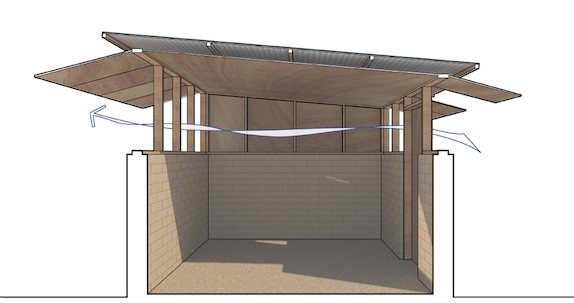
In its design, DVS envisions a simple house made of compressed earth blocks and a wooden frame. A corrugated metal roof is raised slightly from the house to provide air flow. What's more interesting than just the design for one $300 house is DVS' plan to build the houses together in compounds with a central courtyard, which is where activities like cooking and washing would take place.
ArchitectureCommons
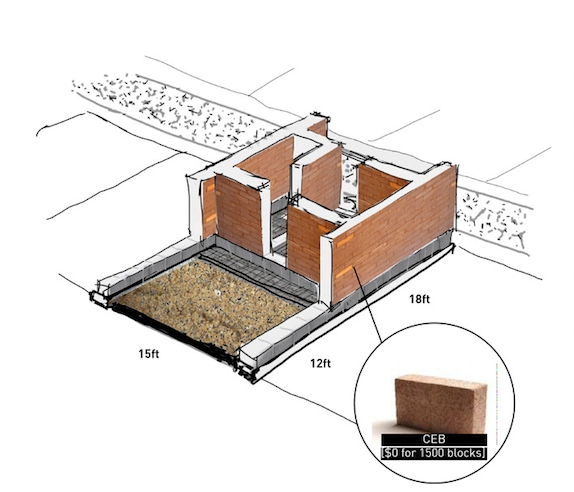
The main focus of ArchitectureCommons's plan is not just a house, but a new economic system. By creating local cooperatives that make earthen bricks, AC believes the entire structure of the house could be manufactured for free. Maybe a sneaky way around the rules, but also a potentially game-changing innovation for poor communities in need of housing and industry.
Elsap11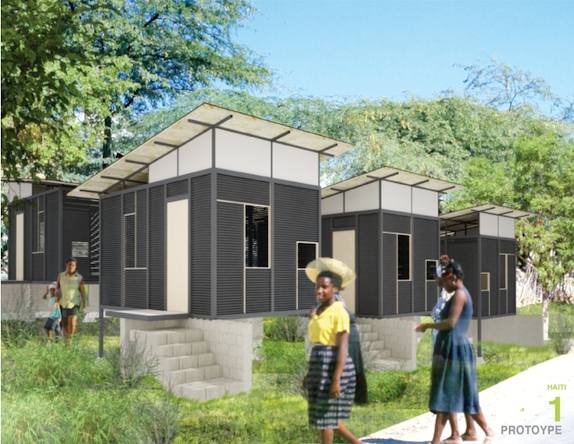
The design of Elsap11's house involves a concrete base, and cardboard tubes impregnated with tar. A raised roof keeps away the elements but also allows for ventilation.
iLines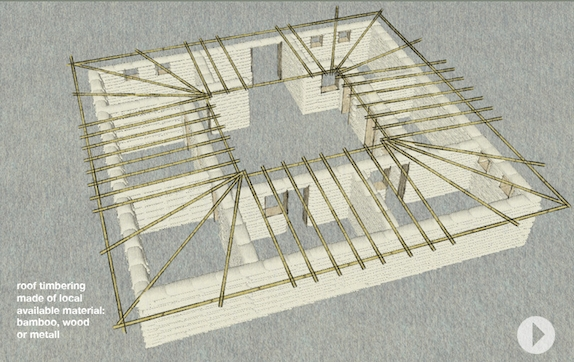
iLines envisions a series of houses centered around a central courtyard. Its design also uses earth-filled bags, supported by wood or bamboo. The roof can either be made of bags filled with a light-weight material or, in wetter climates, a combination of cardboard and scrap metal
PSouter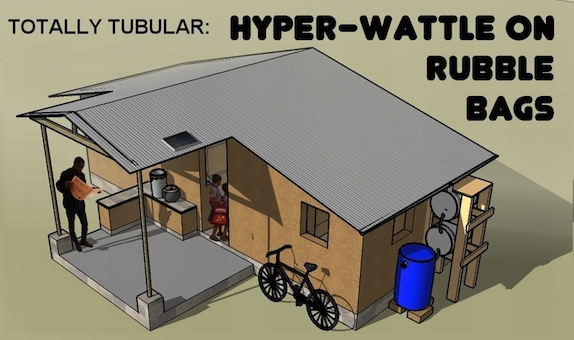
PStouters' design features a base made of bags of dirt (easily obtainable), topped with rows mesh cylinders filled with clay. The desin allows for the simple addition of extra sleeping areas or of a cooking porch, to keep cooking smoke outside the main house. For different climates, it can be insulated or have windows added for little extra cost.
Rogerio AA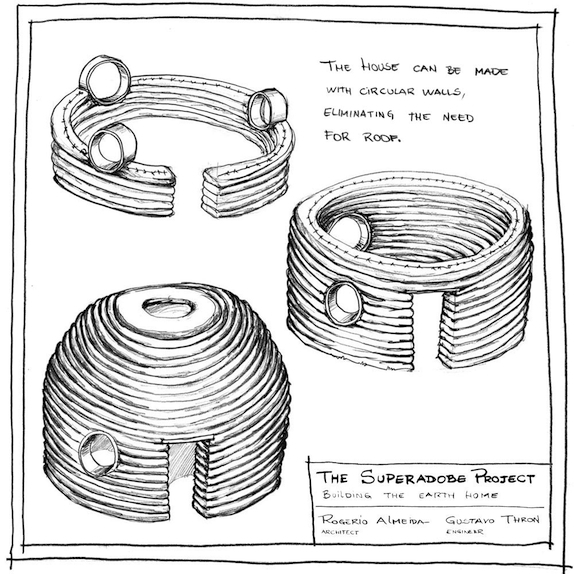
Instead of filling bags with dirt, Rogerio Almeida's SuperAdobe project involves filling plastic tubing. The tubes can then be laid down to create the walls of a building. They can even be wrapped around in concentric circles to create a beehive effect, eliminating the need for a roof.
Facebook announces video calling, powered by Skype
Facebook co-founder and CEO Mark Zuckerberg today announced video calling, powered by Skype for its 750 million plus users. The video functionality has been built it right into Facebook Chat, so all your conversations start from the same place. To call your friend, just click the video call button at the top of your chat window (though there is a one-time setup you will have to go through first).
Facebook has just announced a major new feature that it’s launching in tandem with Skype: video calling.
It’s a feature that’s been rumored for quite a while, and it’s one that Facebook is putting a lot of weight behind. Now, whenever you browse to a friend’s profile, you’ll see a new button nestled between the ‘Message’ and ‘Poke’ buttons that says ‘Call’. Click that, the other user will see a popup asking if they want to accept a call, and you’ll be immediately connected (you’ll need to install a small plugin the first time you use the service).


You’ll also see video calling integrated into Facebook’s Chat product. Really, you can’t miss it — Facebook is launching a new chat sidebar today that’s hard to miss (by default it takes the entire right side of the screen), and the first time you click on any user you’ll see a prompt asking if you’d like to make your first video call.
Bionic glasses for poor vision - Artificial sight
Interactive bionic vision
Computer aided visual prosthetics hope to restore vision in blind and poorly sighted individuals.
It has recently become possible to improve or restore sight for some people who are visually impaired or blind.
One technique is for surgeons to implant a tiny electrical chip into the eye to provide a stronger signal into the retinal cells. We're developing another technique that uses computer vision to simplify the visual scene so as to improve the ability of visually impaired people to recognise things around them.

This exhibit has interactive simulations that allow visitors to experience what the world looks like through each of these techniques and to explore the hardware that make up the next generation of visual prosthetics.
Here’s an interview with Dr Stephen Hicks from the University of Oxford about his exhibit Artificial sight: Interactive bionic vision.
Source: The Royal Society
How to measure emotions
Want marketers to measure your emotions? That technology's coming
Are you a geek who has trouble “reading” people? Now there is new hope.
Research at the MIT Media Lab and the University of Cambridge to help people on the autism spectrum has spawned two new technologies to measure emotional response, along with a company called Affectiva to market them.
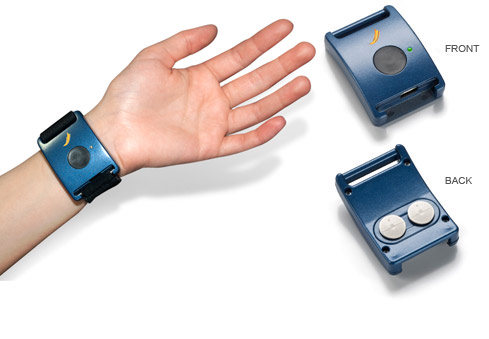
Q Sensor Curve is designed to wear on the wrist, so it is comfortable and unobtrusive to wear all day at work, play, or sleep. This makes it ideal for long-term measurement in clinical and therapeutic research. (Credit: Affectiva)
Researchers have shown they can use technologies to measure your emotional state of mind for market research, educational, and medical purposes. The technology could ultimately become part of a larger set of tracking tools that will help companies tailor products and services more precisely to people they’re targeting. ... read more
Source: MIT Media Lab, Effectiva
'Brain Drain' or 'Brain Exchange': What Is the Cost When Immigrant Entrepreneurs Go Home?
For a majority of highly skilled immigrants who want to start companies today, the promised land is no longer the United States, according to a recent report from the Kauffman Foundation. Some experts say the flow of immigrants back home to countries like India and China is a "brain drain" that robs the U.S. of new jobs and companies, and requires an immigration policy overhaul. Others see the flow as more of a "brain circulation" that benefits economies on both sides of the sea.

Wadhwa, a senior research associate at Harvard Law School and director of research at Duke's Center for Entrepreneurship and Research Commercialization, falls on the "brain drain" end of the spectrum. "It's not a brain drain; it's a brain hemorrhage," he insists. He sees the flow as a policy problem, the result of a visa system that broke down after 9/11 and the dot-com bust, stymying more than half a million skilled immigrants. Would-be entrepreneurs now wait years in "green card limbo," stuck in jobs tied to H-1B visas that allow neither transfer nor promotion, Wadhwa notes. "Not only can you not start a company, but you are stagnant in your career."
It's a world away from three decades ago, when Wadhwa immigrated from India. "It took me 18 months to get a green card," he recalls. He started his first company 15 years later -- and wasn't alone. In fact, one out of every four technology and engineering companies launched between 1995 and 2005 had at least one immigrant founder, Wadhwa discovered in a nationwide survey of more than 2,000 companies in 2007. In Silicon Valley, the number was 52%. More...
Source: Knowledge@Wharton
A "paper" smartphone? Welcome to the future
Smartphones, laptops, and tablets will soon be as thin and flexible as a piece of paper. This is not science fiction. It’s already happening.
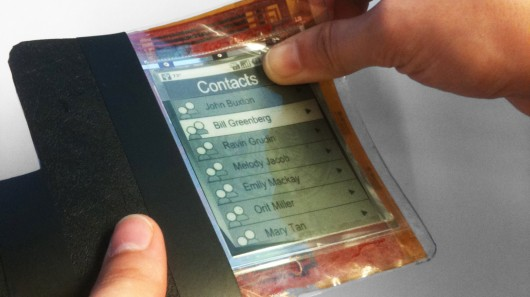
According to Gizmag.com: “Researchers from the Human Media Lab at Canada’s Queen’s University have created a fully-functioning floppy smartphone [that they call a] Paperphone. The Paperphone can do things like making and receiving calls, storing e-books, and playing music. [It] conforms to the shape of its user’s pocket or purse, and can even be operated through bending actions.”
“This computer looks, feels and operates like a small sheet of interactive paper,” said its creator, Roel Vertegaal, who is also the director of the Human Media Lab. “You interact with it by bending it into a cell phone, flipping the corner to turn pages, or writing on it with a pen.”
In just a few short years (perhaps sooner) computers like the MacBook Air will seem like boat anchors…the iPad will feel like a cast-iron frying pan…and you’ll be able to carry your smartphone like a dollar bill in your wallet. It’s all right around the corner.
Source: Eric Knight
Over 4,000 books now available as free PDF downloads
All PDF versions of books published by the National Academies Press are now downloadable to anyone free of charge.
![]() Makes All PDF Books Free to Download;
Makes All PDF Books Free to Download;
More Than 4,000 Titles Now Available Free to All Readers
This includes a current catalog of more than 4,000 books plus future reports produced by the Press. The mission of the National Academies Press (NAP) — publisher for the National Academy of Sciences, National Academy of Engineering, Institute of Medicine, and National Research Council — is to disseminate the institutions’ content as widely as possible while maintaining financial sustainability. To that end, NAP began offering free content online in 1994.
Printed books will continue to be available for purchase through the NAP website and traditional channels. The free PDFs are available exclusively from NAP’s website, and remain subject to copyright laws.
Source: The National Academies Press
Google, Microsoft, and Yahoo Team Up to Advance Semantic Web
Google, Microsoft, and Yahoo have teamed up to encourage Web page operators to make the meaning of their pages understandable to search engines.
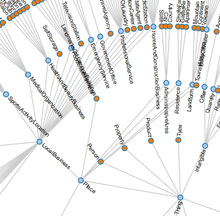
Web of words: This graph of linked phrases lets software understand the meaning of online content. The system is backed by Google, Microsoft and Yahoo.
Credit: Dan Brickley
The three big Web companies launched the semantic-Web-technology initiative, known as Schema.org, last week. It defines an interconnected vocabulary of terms that can be added to the HTML markup of a Web page to communicate the meaning of concepts on the page. This data will allow search engines to better understand how useful a page may be for a given search query.
Schema.org asks for semantic markup to be written using a format known as microdata, which is not yet a W3C standard, rather than RDFa, a more widely used W3C-approved alternative.
Source: Technology Review
How Tiny Whims Reveal Your Deepest Self
We've all got the vague notion that our little preferences say something about us. For example, you might assume that someone who wears only tight clothing is both a little vain and maybe fast. But take that one step further: Could you use that to surmise their dominant hand or how many hours they sleep at night?
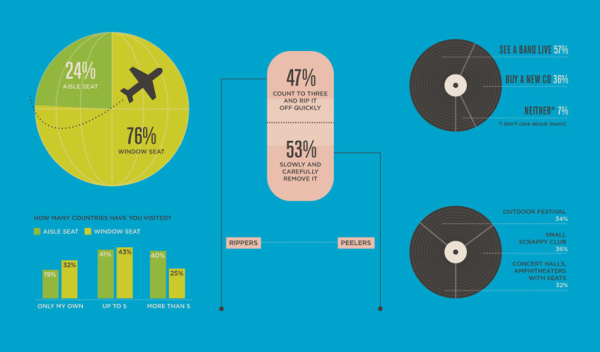
Hunch has used their massive database to correlate millions of personal preferences, and dropped them into this astonishing infographic. For instance, if you don't support the death penalty, you're more likely to have never cheated on a test; if you prefer to squash a bug you see on the ground rather than shoosh it away, you're probably a dog person. See More
Source: Co.Design

